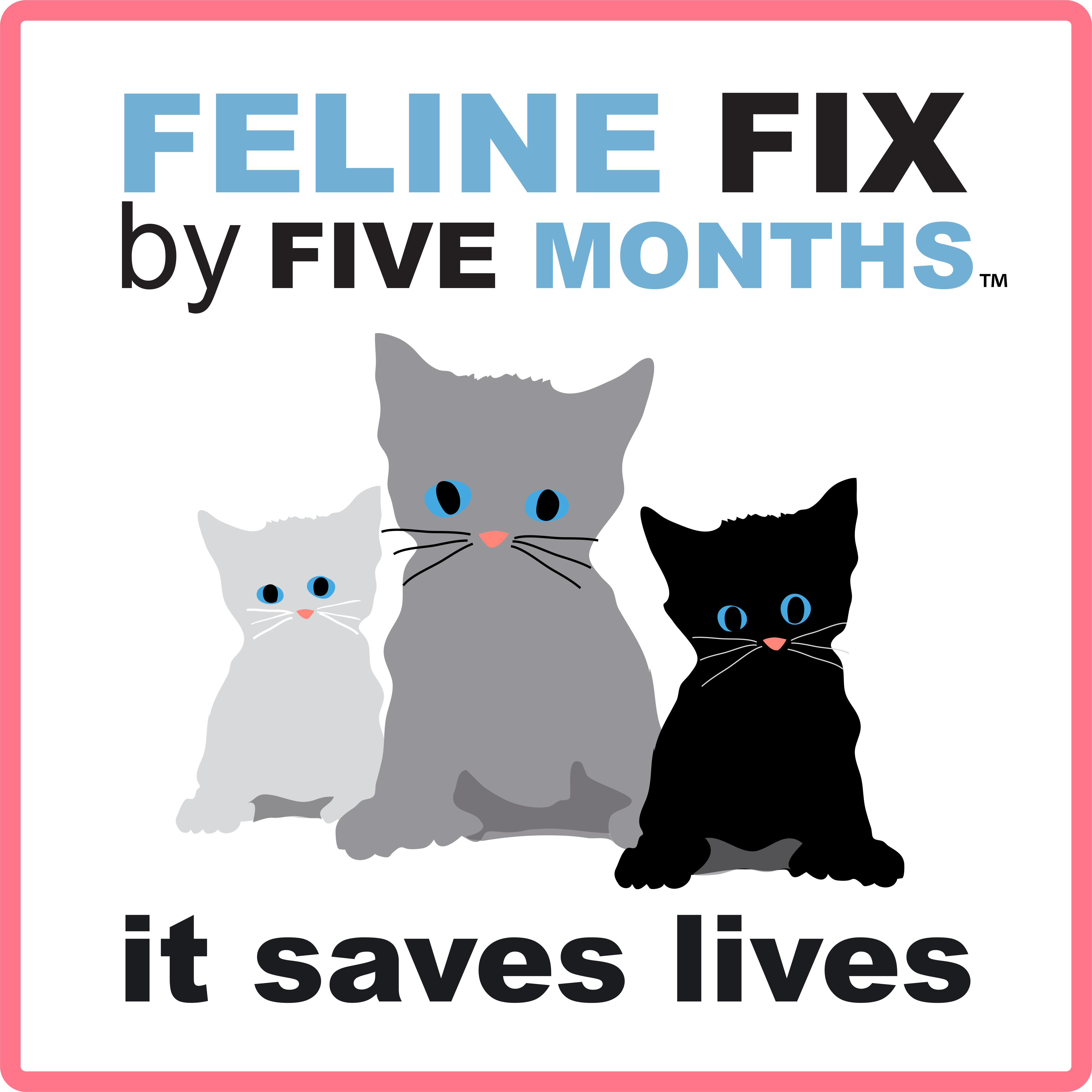Current recommendations for the age to sterilize (spay/neuter) cats are arbitrary and inconsistent. Adoption of evidence-based guidelines is expected to limit confusion among cat owners, reduce the risk of unwanted litters, and maximize health and welfare benefits.
A task force of veterinarians and experts selected from private and corporate veterinary practice, feline specialty practice, shelter practice, organized veterinary medicine, feline health research, behavior, and academia was convened to review the currently available evidence for the ‘optimum age for spaying or neutering cats.’ The Veterinary Task Force on Feline Sterilization task met on January 15, 2016 in Orlando, Florida.
The following key findings and proposals emerged from a review of the currently available scientific literature and group discussion:
- Recommendations for the optimal age to sterilize cats may differ from the age to sterilize dogs.
- Current scientific evidence documents benefits of spaying kittens before the first estrous cycle, including the following:
- Decreased risk for mammary carcinoma(1-4)
- Elimination of reproductive emergencies such as pyometra and dystocia
- Avoidance of unintended pregnancies that may occur as early as 4 months of age • Potential decrease in behavioral problems linked with cat relinquishment.(5)
- Current evidence does not support an increased risk for cats of complications or long-term adverse health effects with pediatric (6-14 weeks) or juvenile (>16 weeks) sterilization.(6-7)
- More controlled prospective research specifically examining different ages in sterilization in cats is needed. As new information becomes available, the recommended age for sterilization of cats should be revisited.
- There is potential to increase the number of sterilized cats and reduce the unplanned/unwanted litters of kittens if veterinarians routinely schedule this surgery for client-owned cats at the end of the kitten vaccination series.
Given the known benefits of sterilization and the lack of evidence for harm related to age at which the procedure is performed, the Veterinary Task Force on Feline Sterilization calls for veterinary practitioners and professional associations to recommend sterilization of cats by five months of age. This provides veterinary practitioners with a consistent message that may increase veterinary visits and spay/neuter compliance while reducing the risk of pet relinquishment and unwanted offspring.
Individuals who are participants of the veterinary task force on feline sterilization:
(The participant titles/affiliations on this list do not imply formal organizational support at this time.)
Kirk J . Breuninger, VMD, MPH, Veterinary Research Associate, Banfield Pet Hospital, Portland, Oregon
Steve Dale, CABC, certified animal behavior consultant, writer/TV-radio host, board member Winn FelineFoundation
Lauren E . Demos, BGS BSc (Vet Biol) BVMS Hons (Vet Virology), Resident, ABVP (Feline), VIN Associate Editor, Feline Internal Medicine, 2016 President Elect, American Association of Feline Practitioners Board of Directors, Veterinary Information Network
Brenda Griffin, DVM, MS, Dipl. ACVIM, Adjunct Professor of Shelter Medicine, University of Florida, Department of Small Animal Clinical Sciences; Regent for Shelter Medicine specialty, ABVP-SMP
Brian Holub, DVM. Chief Medical Officer, VetCor, Hingham, Massachusetts; board member Winn Feline Foundation; medical advisory board Canine Health Foundation
Kendall Houlihan, DVM. Assistant Director, Animal Welfare Division, American Veterinary Medical Association Julie Levy, DVM, PhD, DACVIM. Professor, College of Veterinary Medicine, University of Florida, Gainesville, Florida
Esther Mechler, Marian’s Dream: Philanthropy for Animal Advocates
Joan Miller, The Cat Fanciers’ Association, Chair, Outreach and Education Program, San Diego, California
Michael R . Moyer, VMD. President and Owner Bridgewater Veterinary Hospital and Bridgewater Consulting, Bensalem, Pennsylvania.
Glenn A . Olah, DVM, PhD, DABVP (feline). Winn Feline Foundation, President, Wyckoff, New Jersey; Albuquerque Cat Clinic, Albuquerque, New Mexico
References
- Dorn CR, Taylor DO, Schneider R, Hibbard HH, Klauber MR. Survey of animal neoplasms in Alameda and Contra Costa Counties, California. II. Cancer morbidity in dogs and cats from Alameda County J Natl Cancer Inst. 1968 Feb;40(2):307-18
- Hayes HM Jr, Milne KL, Mandell CP. Epidemiological features of feline mammary carcinoma. Vet Rec1981 May 30;108(22):476-9.
- Misdorp W. Romijn A, Hart AAM. Feline mammary tumors: A case-control study of hormonal factors.Anticancer Research 1991;11(5)1793-1797.
- Overley B, Shofer FS, Goldschmidt MH, Sherer D, Sorenmo KU. Association between ovarihysterectomyand feline mammary carcinoma . J Vet Intern Med 2005 Jul-Aug;19(4):560-3.
- Patronek GJ1, Glickman LT, Beck AM, McCabe GP, Ecker C., Risk factors for relinquishment of cats to an animal shelter, J Am Vet Med Assoc 1996 Aug 1;209(3):582-8.
- Looney AL, Bohling MW, Bushby PA, Howe LM, Griffin B, Levy JK, Eddlestone SM, Weedon JR, Appel LD, Rigdon-Brestle YK, Ferguson NJ, Sweeney DJ, Tyson KA, Voors AH, White SC, Wilford CL, Farrell KA, Jefferson EP, Moyer MR, Newbury SP, Saxton MA, Scarlett JM. The Association of Shelter Veterinarians veterinary medical care guidelines for spay-neuter programs. J Am Vet Med Assoc 2008 Jul 1;233(1):74-86 .
- Association of Shelter Veterinarians. Position Statement: Early-Age Spay-Neuter of Dogs and Cats. http://www.sheltervet.org/position-statements
July 8, 2016

